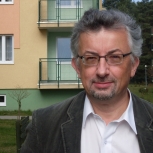Why cities and their governance are vital keys to boosting social innovation
Edited on
24 June 2019
Read time: 13 mins
Cover picture: Eurodiaconia
A meaningful change of context for cities
Two important international acts have taken place in 2016, that significantly enlarge the scope of action, and the responsibilities of cities. On the international scale, its the United Nation's Agenda for Sustainable Development, where in New York in September, 17 Sustainable Development Goals were endorsed by world leaders. If read attentively each one implies a lot of work most of all for local governments in partnership with transnational organisations, national and regional governments:

The other historic event concerning cities is the European Union's Urban Agenda, prepared and piloted by the Dutch presidency of the European Union, that strongly underlines, that cities have to be brought to the forefront of transnational collaboration, as strategies and policies decided without them appear not to have the successes that were envisaged.

The main aims of the Urban Agenda are:
1. Promoting the involvement of cities in EU policy making and the development, implementation and evaluation of more ´urban friendly´ European legislation (‘Better Regulation’).
2. Ensuring better access to and utilisation of European funds.
3. Improving the European urban knowledge base and stimulating the sharing of best practices and cooperation between cities.
URBACT as a whole can be proud to show, that over the 3 generations of networks, these very aims have guided it and made it more and more influential on urban subjects.
What challenges for the URBACT networks?
URBACT is a strong and very present actor in the EU Urban Agenda, participating in all the thematic networks, that are run by representatives of countries and cities together. Boosting Social Innovation, as one of the 19 action planning networks has to take on this challenge, as the subject matter it deals with concerns how to act in a new innovative landscape, which is the exact equivalent of a social innovation that is brought into the horizon of a given city.
What is the core of Boosting Social Innovation?
 This network of 10 EU cities and 1 non EU observer (Lviv from the Ukraine) works on improving or creating the ecosystems, that stimulate, foster and develop social innovation. The functioning of these ecosystems (a little different in each city) relies on the quality of relationships built between many pluridimensional actors, who act across boundaries, cross fertilize, and create a community that welcomes and invites even more social innovation.
This network of 10 EU cities and 1 non EU observer (Lviv from the Ukraine) works on improving or creating the ecosystems, that stimulate, foster and develop social innovation. The functioning of these ecosystems (a little different in each city) relies on the quality of relationships built between many pluridimensional actors, who act across boundaries, cross fertilize, and create a community that welcomes and invites even more social innovation.In relation to the main themes decided by the network this implies the following complementarities:
1. Governance goes with brokerage:
Good coordination of the SMART city policy in Milan is achieved by a coordination at the political level of all actions, in several departments, that have an effect on this global city policy. In Gdansk, the migration policy initiated by the mayor Pawel Adamowicz, has been built by a partnership of 120 structures, who co-constructed a model, involving all the different aspects of a migrant's reality, from education to health, from security to work, from housing to mobility. In Braga, the policy of awakening the city centre has concentrated on the youth of the city in a participative manner. Within the Boostinno logic, the social innovation aspect has been appreciated as more global, and it has become the responsibility of the social policy department. Paris has decided that it will not receive any deliveries next year, from diesel trucks or cars. Therefore it is playing out the role of a strategic innovator, relying on its economic strategies to improve the air cleanliness of the city.
Compared to a classical definitions of what a local authority must do, (infrastructure, sewage, transport etc) these examples clearly show, that the role of cities is evolving and changing rapidly. They are no longer the simple executors of national policy, with a minimum of leeway to take initiatives. They have to interact with citizens and are:
- influencing economic development in directions, which are in accordance with their strategies,
- changing the situation of citizens, by creating models and tools to deal with new unplanned situations,
- changing the policies of the city in order to profit from external stimulations,
- taking unprecedented initiatives in city management, in order to achieve aims, which can no longer be those of one elected member or one department, but have to have an integrated approach.
The Boosting Social Innovation network, is facing the challenge to address the subject of brokerage in the next transnational workshop, where the partners will work out how this new role affects a person (i.e. a city employee or a local politician), but also city partners, the city administration as well as the network of cities, working in the direction of social innovation.
2. City and citizens, goes with building relationships:
Barcelona Activa runs many training courses, especially in the area of computer literacy at an advanced level. City policy has underlined the need for the population to become as versed as possible in this area to boost economic development. The city's major tool in local development, builds its relationship with inhabitants on this basis. Baia Mare has initiated many meetings of the URBACT local groups, basing its work on building bottom up approaches. Wroclaw is building its policy of returning the main street of the city to the free use of inhabitants, by starting up and developing relationships with different stakeholders; business people, inhabitants, street users, younger and older persons etc. Strasbourg has strongly invested co-construction with citizens, as the best method to build up its social and solidarity economy sector with incredible results.
The relationship between city administrations and citizens is evolving rapidly. If at some point it was limited to obligatory services rendered to citizens, or strict control over their lives (as in ex-communist countries) at present local authorities have to:
- share their responsibilities with inhabitants, eg. quadruple helix,
- ensure appropriate data availability to citizens, eg. big data,
- prove their own transparency to inhabitants who are well informed, eg. social media,
- address the question of training of their employees, who must become brokers of the ideas and energy of the citizens,
- welcome innovations of all sorts, by obtaining skills in change management, sense management, political management, which give inhabitants the feeling and they are listened to and can influence decisions, eg. sensemapping.
3. Spaces go with where to do all this:
Picture: BASE Milano
 Dedicated spaces for social innovation already exist in Turin (Rinascimenti Sociali Center) and Milan (BASE). Gdansk is planning its own social innovation space, whilst several other cities have a mixed bag of spaces, where social innovation has its place. Social innovation is not just a question of physical space. The real added value of Turin's ecosystem, is the relationship built amoung all the actors of the quadruple helix; knowledge, public, private and citizen sectors. The city also has the capacity to mobilise individual competences for free, as well as institutional ones (8 banks which are ready to give credit to social innovators). On the other hand Paris supports the development of social innovation (social and solidarity economies included) by producing cheaper spaces in expensive Paris, where keeping initiatives inside the city is a real challenge. Spaces for innovative culture link three of the network cities; Skane county, Milan and Braga; the BASE complex in Milan shows that artists and creative persons have a profound role to play in local development. The role of spaces is thus multiple:
Dedicated spaces for social innovation already exist in Turin (Rinascimenti Sociali Center) and Milan (BASE). Gdansk is planning its own social innovation space, whilst several other cities have a mixed bag of spaces, where social innovation has its place. Social innovation is not just a question of physical space. The real added value of Turin's ecosystem, is the relationship built amoung all the actors of the quadruple helix; knowledge, public, private and citizen sectors. The city also has the capacity to mobilise individual competences for free, as well as institutional ones (8 banks which are ready to give credit to social innovators). On the other hand Paris supports the development of social innovation (social and solidarity economies included) by producing cheaper spaces in expensive Paris, where keeping initiatives inside the city is a real challenge. Spaces for innovative culture link three of the network cities; Skane county, Milan and Braga; the BASE complex in Milan shows that artists and creative persons have a profound role to play in local development. The role of spaces is thus multiple:- physical spaces that allow meetings, networking, co-working, accidental and organised face to face working sessions, such as the Krzywy Komin design centre in Wroclaw, the FabriQ incubator in Milan, or the Clipster residential incubator in Gdansk,
- virtual spaces, that produce information, potential contacts, exchange of experiences, links,
- mental spaces, where people can "fit in together" because the moment, the theme, or the opportunity are right, from Fuck Up sessions to mobilisation around subjects that unite (the manifestations against the antiabortion act in Poland),
- temporary spaces, which produce volatile meeting places, but which show directions to take, use urban open and closed spaces, develop planned and accidental potentials, like the summer occupation of the Targ Weglowy in Gdansk,
- permanent spaces, where unusual suspects can interact and develop professional competences, like the Barcelona school of arts, for young persons from difficult areas (Espai Jove Boca Nord).
4. Impact measurement goes with understanding the results of what we do:
The vice-mayor of Paris, Antoinette Guhl, underlined at the network's kick off meeting, that for her every decision the local authority takes, has to be clear and understandable to the average inhabitant. This is a real challenge for cities, as they have difficulties themselves to measure what they do, and are often not very good at communicating the results of their work to their citizens, even though social media have notably changed the information equation. Impact measurement as such appears often in texts and communications, but as the recent Diakonia conference on this subject in Brussels showed, good simple, cheap and practical ways of measuring social and urban impact are still to be invented and put into practice. This constitutes one of the future challenges of the network.
Notwithstanding several steps have been taken in the Boosting Social Innovation network to try to improve this score:
- cities have invested a lot of time and energy in the URBACT local groups (ULG's), basing their work on including all the actors of the quadruple helix methodology and taking care especially to open the ULG's to what are called "unusual suspects",
- substantial attention has been given to communication tools, that are very rapidly improving, with the help of professionals of this area. This goes for several of the cities as well as the network itself,
- the Barcelona transnational workshop was built around the need for good exchanges amoung cities. This aspect of networking was solidly strengthened by the sensemaking mapping methodology, presented and used by it's creator Dr. Aldo de Moor. It allowed cities to see not only where they stand in regard to the main URBACT themes, but also in relation to the above Boostinno themes, and to investigate the exchange possibilities, and other relationships that can be built. Several cities wish to use the tool to foster their own city networks.
Photo: Visualisation developped with the sensemaking apping tool developped by communitysense.nl, showing the thematic interconnexions between boostinno cities

The co-construction value of this methodology and moreover it's sense making quality may be one of the ways of sharing themes, closeness and other links between local authorities and citizens as well as amoung the cities participating in the network.
What are the added values of these relations?
The above participatory community mapping cycle is based on the assumption that building communities depends on our capacities to intervene, to show results, to create maps, that allow intuitive sensemaking processes to exist. This in turn develops a common vision amoung participants, creating a very strong "social glue". If used as tools for cross-fertilisation, for integrated action planning and doing, this kind of knowledge and feeling can be translated into political arguments, working at the core of the present crisis we are living through, where a total lack of trust has become what is common, but not what gives sense and unites different stakeholders.
Cities must redefine their role as intermediaries, who can relate best to what is happening in our societies, because it is in cities that most people now live. Cities cannot continue to be "ruled" from behind desks, where employees never see how different aspects of the city function or by far away international structures.
Therefore this role of brokers, or sense brokers, that cities should undertake must produce change:
- the city employee is at the service of every citizen,
- citizens, are seen as creative, pro-development inhabitants, who come with ideas,
- the answers a city gives, must be within the limits of the law, but they should also accompany the inhabitant in finding a way to interpret rules and regulations in his favour, if that is at all possible,
- a city structure has to be based on confidence building, and not on fear or uncertainity. This allows all the stakeholders to feel the moment of freedom necessary to be capable of inventing new things, and contributing to a better quality of life,
- partnership (both vertical and horizontal) becomes the key concept, as cities are not capable of everything, but if they mobilize their partners, their eco-system starts to have an incredible potential, that has to be skillfully managed,
- management of cities is described by some as the capacity to straddle many dimensions, developing the multitalent or multidisciplinary approach. This need for an integrated way of working shows, that the often existing departments and political responsibilities have to be rethought, so as to allow cities to act as if they were living beings, within all their complexity,
- being institutions, cities feel that they will always exist. This is true, but the success of cities over the ages has always been linked to their capacity to adapt to changes going on in society. These changes may be put up with by cities, or they can be implemented by cities, who are in the forefront of change, stimulating markets towards new products, new services and new spaces,
- similarly cities have to adapt to what some call the "new economies" where social economy, the sharing economy or the circular economy need different forms of facilitation and support. Here once again the city is not placed in its controlling or reigning role, but in that of the broker, trying to welcome and stimulate new forms of economic acitivity, that are more responsible and try to be more socially just.
Conclusions – a two way process:
Cities have to manage on the ground, hands on all the time. Other levels of governance have to make spaces for local policies to be capable of dealing with the challenges, and undoubtedly the role of supranational bodies like the European Union have to stimulate national governments in appropriate directions. The Urban Agenda is giving cities a long hoped for co-construction role, that is so important. In addition in some countries cities are getting organised amoung themselves, in order to fully benefit from this European logic, and to make their own contributions through more intensive networking.
So social innovation will only exist and develop if the capacity for change and its management are fully taken on board by cities first, but also by the other governance levels. Creativity as such can only take place when the stakeholders feel that they are free to do so. This freedom comes from trust, stability and the right to make mistakes, seen as a creative process in itself and must include citizens, city workers, politicians, entrepreneurs and the knowledge sector. This inclusion aspect is critical. Several of the network cities are working intensively on how to involve and empower those citizens who are far removed from participation, mainly those living in regeneration areas. Here once again it appears that the relationships, which can be built, are crucial, and in this cities require and need the support of all the other levels of governance.
Themes homepage sticky:
 Submitted by Peter Wolkowinski on
Submitted by Peter Wolkowinski on




